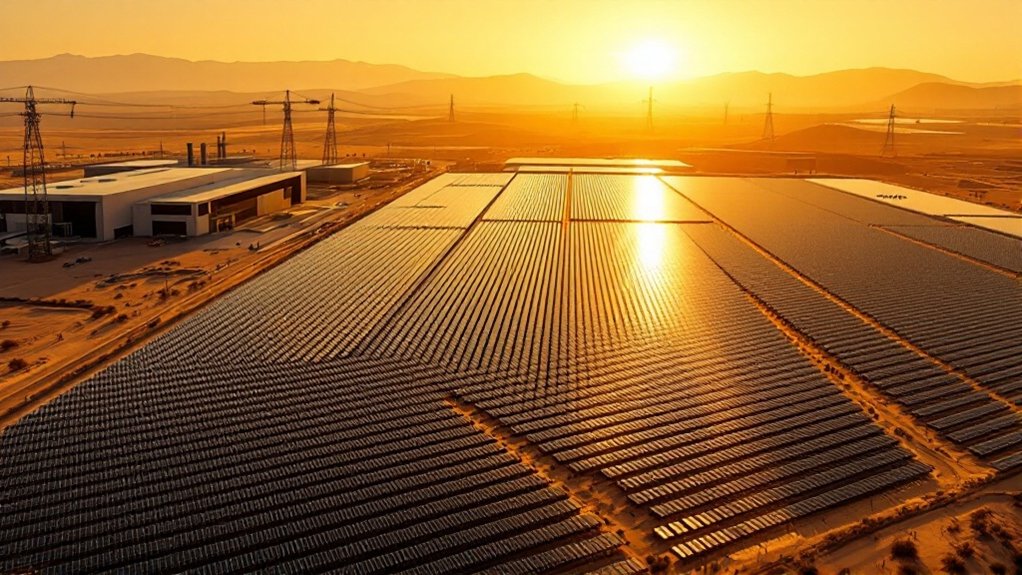Solar energy is revolutionizing the American economy, creating over 279,447 jobs across 47 states in 2023 alone. The industry’s explosive growth has slashed installation costs to a mere $0.06 per kWh, making it cheaper than fossil fuels in many regions. U.S. manufacturing capacity nearly doubled to 15.5 GW, while federal incentives like the 30% tax credit are making solar more accessible. With a projected $23 trillion market by 2030, solar’s economic ripple effects are just beginning to surface.

While skeptics doubted solar energy‘s economic viability, the numbers tell a different story. The solar industry added 15,564 jobs in 2023 alone – a 5.9% increase from the previous year. That’s right, while other sectors were busy wringing their hands, solar kept growing. With 279,447 workers now employed across the U.S., solar isn’t just surviving; it’s thriving in 47 states.
Let’s talk money, because that’s what really matters. Solar installation costs have plummeted to $0.06 per kWh in 2024. Compare that to traditional fossil fuels, and you’ll find solar winning the price war in many regions. The global market for renewable energy technologies is projected to hit $23 trillion by 2030. Not exactly pocket change. Solar power generation has increased over eight times since 2014. Renewable energy growth has led to a 10% increase in global electricity generation since 2010.
The manufacturing sector is particularly interesting. U.S. solar manufacturing nearly doubled to 15.5 GW in 2023. Companies like Qcells and First Solar aren’t just talking – they’re building. New facilities are popping up across the country, creating jobs and strengthening domestic supply chains. The days of total dependence on foreign manufacturing are numbered. Solar imports reached an impressive level with 54 GW in 2023.
The government’s finally gotten the memo too. The Federal Investment Tax Credit offers a 30% reduction in installation costs, and the Inflation Reduction Act is pushing things forward even faster. State incentives pile on top of that, making solar increasingly affordable for regular folks. It’s like a nationwide sale on energy independence.
But here’s the kicker – solar isn’t just about dollars and cents. It’s creating resilient communities, providing energy security during grid failures, and reducing dependence on imported fossil fuels. Plus, it doesn’t need water to generate electricity, which is pretty handy considering how precious that resource is becoming.
The solar industry is expected to employ over a million workers in the coming years. That’s a lot of paychecks, a lot of dinner tables, and a lot of local economies getting a boost. Not bad for an industry some people dismissed as a pipe dream.








